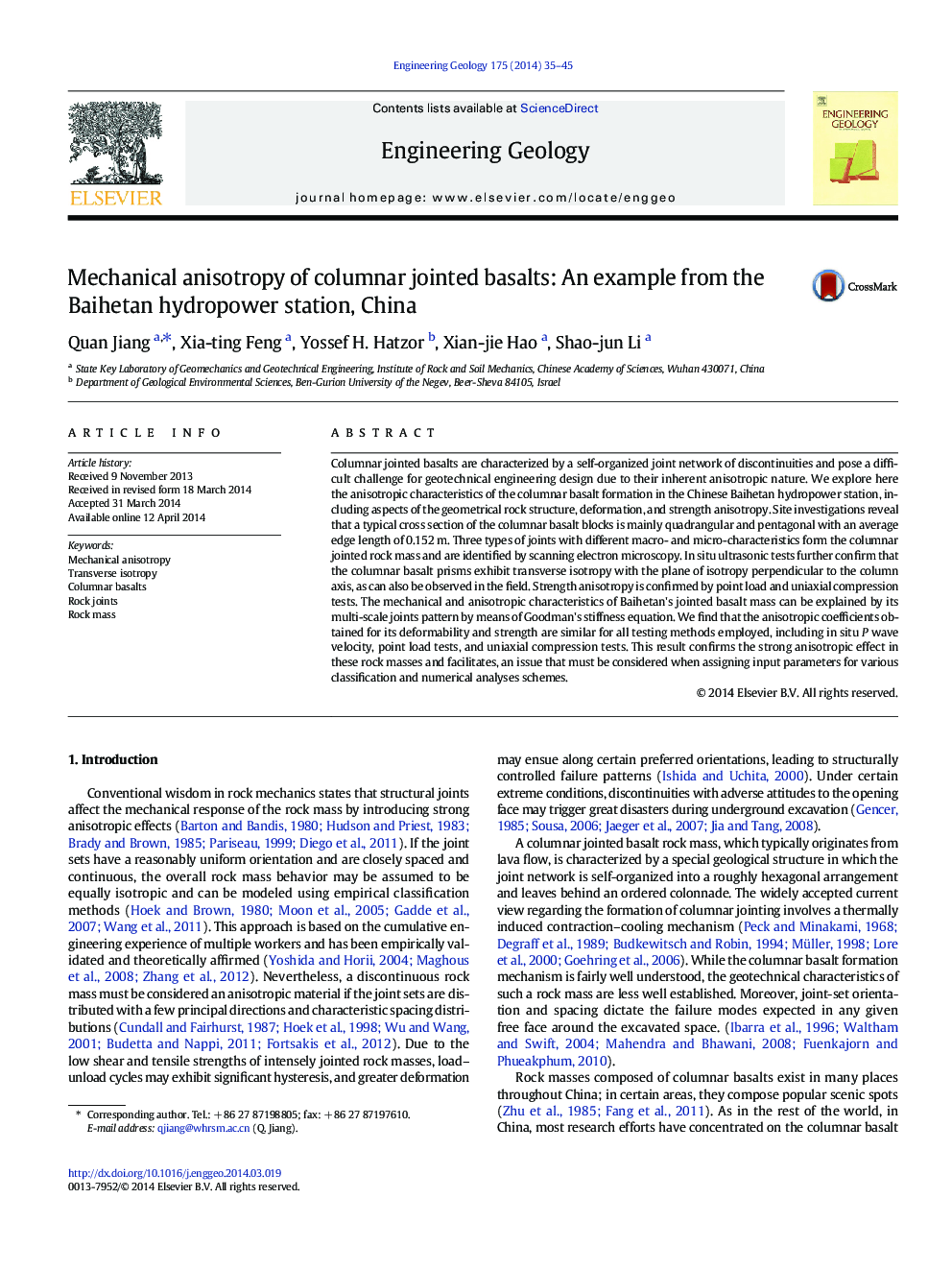| Article ID | Journal | Published Year | Pages | File Type |
|---|---|---|---|---|
| 6447944 | Engineering Geology | 2014 | 11 Pages |
Abstract
Columnar jointed basalts are characterized by a self-organized joint network of discontinuities and pose a difficult challenge for geotechnical engineering design due to their inherent anisotropic nature. We explore here the anisotropic characteristics of the columnar basalt formation in the Chinese Baihetan hydropower station, including aspects of the geometrical rock structure, deformation, and strength anisotropy. Site investigations reveal that a typical cross section of the columnar basalt blocks is mainly quadrangular and pentagonal with an average edge length of 0.152Â m. Three types of joints with different macro- and micro-characteristics form the columnar jointed rock mass and are identified by scanning electron microscopy. In situ ultrasonic tests further confirm that the columnar basalt prisms exhibit transverse isotropy with the plane of isotropy perpendicular to the column axis, as can also be observed in the field. Strength anisotropy is confirmed by point load and uniaxial compression tests. The mechanical and anisotropic characteristics of Baihetan's jointed basalt mass can be explained by its multi-scale joints pattern by means of Goodman's stiffness equation. We find that the anisotropic coefficients obtained for its deformability and strength are similar for all testing methods employed, including in situ P wave velocity, point load tests, and uniaxial compression tests. This result confirms the strong anisotropic effect in these rock masses and facilitates, an issue that must be considered when assigning input parameters for various classification and numerical analyses schemes.
Related Topics
Physical Sciences and Engineering
Earth and Planetary Sciences
Geotechnical Engineering and Engineering Geology
Authors
Quan Jiang, Xia-ting Feng, Yossef H. Hatzor, Xian-jie Hao, Shao-jun Li,
